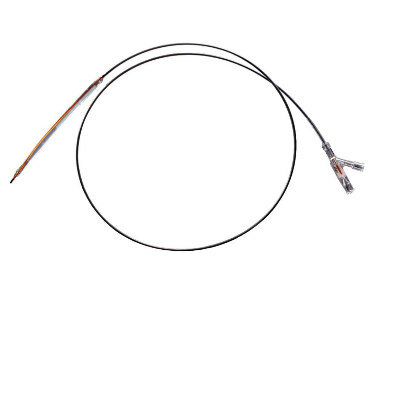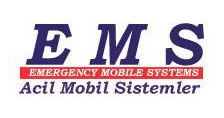Wearable Sensors Assess Air Pollutants Exposure
|
By HospiMedica International staff writers Posted on 12 Nov 2019 |

Image: A new wearable air pollution monitor could detect worker exposure (Photo courtesy of CSU)
A lightweight, inexpensive, wearable air pollution monitor can help detect worker exposure to aerosol and vapor hazards.
Under development at Colorado State University (CSU; Fort Collins, USA) via a grant from the National Institute for Occupational Safety and Health (NIOSH), the portable sensor is based on the design of the Ultrasonic Personal Air Sampler (UPAS), which collects data on particle exposures using a silent, low-power micropump. Like commercial smartphones, the miniaturized sensor (which will be the about the size of a nametag) will be ready to use out of the box and require minimal user training.
The researchers plan to test the sensors on several hundred workers in various industries, including emergency responders, assembly-line workers, and oil and gas drillers. A social science team will engage with study volunteers through surveys, interviews, and targeted messaging. One of the study partners is Poudre Fire Authority (Fort Collins, CO, USA), which will to test the monitors on firefighters. The researchers suggest their project will change worker- and organizational-level attitudes toward occupational hazard assessment and mitigation.
“First responders are one of the most vulnerable workforces to environmental hazards, they put their lives at risk, and they often pay the ultimate price. Part of our challenge is to develop something so vanishingly small and quiet and unobtrusive that those first responders will have no problem wearing these devices,” said team leader John Volckens, PhD, of the department of mechanical engineering. “A primary goal of this project is to help workers gain the information they need to make decisions that protect themselves from the unseen hazards in the air around them.”
Air pollutants, which can be of natural origin or man-made, include solid particles, liquid droplets, or gases. Primary pollutants are usually produced by processes such as ash from a volcanic eruption. Other examples include Carbon monoxide (CO) from motor vehicle exhausts, Sulphur dioxide (SO2) released from factories, Nitrogen oxides (NOx), expelled from high temperature combustion, and other gases. Secondary pollutants form when primary pollutants react or interact, such as ground level ozone.
Related Links:
Colorado State University
National Institute for Occupational Safety and Health
Poudre Fire Authority
Under development at Colorado State University (CSU; Fort Collins, USA) via a grant from the National Institute for Occupational Safety and Health (NIOSH), the portable sensor is based on the design of the Ultrasonic Personal Air Sampler (UPAS), which collects data on particle exposures using a silent, low-power micropump. Like commercial smartphones, the miniaturized sensor (which will be the about the size of a nametag) will be ready to use out of the box and require minimal user training.
The researchers plan to test the sensors on several hundred workers in various industries, including emergency responders, assembly-line workers, and oil and gas drillers. A social science team will engage with study volunteers through surveys, interviews, and targeted messaging. One of the study partners is Poudre Fire Authority (Fort Collins, CO, USA), which will to test the monitors on firefighters. The researchers suggest their project will change worker- and organizational-level attitudes toward occupational hazard assessment and mitigation.
“First responders are one of the most vulnerable workforces to environmental hazards, they put their lives at risk, and they often pay the ultimate price. Part of our challenge is to develop something so vanishingly small and quiet and unobtrusive that those first responders will have no problem wearing these devices,” said team leader John Volckens, PhD, of the department of mechanical engineering. “A primary goal of this project is to help workers gain the information they need to make decisions that protect themselves from the unseen hazards in the air around them.”
Air pollutants, which can be of natural origin or man-made, include solid particles, liquid droplets, or gases. Primary pollutants are usually produced by processes such as ash from a volcanic eruption. Other examples include Carbon monoxide (CO) from motor vehicle exhausts, Sulphur dioxide (SO2) released from factories, Nitrogen oxides (NOx), expelled from high temperature combustion, and other gases. Secondary pollutants form when primary pollutants react or interact, such as ground level ozone.
Related Links:
Colorado State University
National Institute for Occupational Safety and Health
Poudre Fire Authority
Latest Critical Care News
- Pulse Oximeter Index Offers Non-Invasive Guides for Fluid Therapy
- Wearable Patch for Early Skin Cancer Detection to Reduce Unnecessary Biopsies
- 'Universal' Kidney to Match Any Blood Type
- Light-Based Technology to Measure Brain Blood Flow Could Diagnose Stroke and TBI
- AI Heart Attack Risk Assessment Tool Outperforms Existing Methods
- Smartphone Imaging System Enables Early Oral Cancer Detection
- Swallowable Pill-Sized Bioprinter Treats GI Tract Injuries

- Personalized Brain “Pacemakers” Could Help Patients with Hard-To-Treat Epilepsy
- Microscopic DNA Flower Robots to Enable Precision Medicine Delivery
- Origami Robots to Deliver Medicine Less Invasively and More Effectively
- Improved Cough-Detection Technology Aids Health Monitoring
- AI Identifies Children in ER Likely to Develop Sepsis Within 48 Hours
- New Radiofrequency Therapy Slows Glioblastoma Growth
- Battery-Free Wireless Multi-Sensing Platform Revolutionizes Pressure Injury Detection
- Multimodal AI to Revolutionize Cardiovascular Disease Diagnosis and Treatment
- AI System Reveals Hidden Diagnostic Patterns in Electronic Health Records
Channels
Surgical Techniques
view channel
Robotic Assistant Delivers Ultra-Precision Injections with Rapid Setup Times
Age-related macular degeneration (AMD) is a leading cause of blindness worldwide, affecting nearly 200 million people, a figure expected to rise to 280 million by 2040. Current treatment involves doctors... Read more
Minimally Invasive Endoscopic Surgery Improves Severe Stroke Outcomes
Intracerebral hemorrhage, a type of stroke caused by bleeding deep within the brain, remains one of the most challenging neurological emergencies to treat. Accounting for about 15% of all strokes, it carries... Read morePatient Care
view channel
Revolutionary Automatic IV-Line Flushing Device to Enhance Infusion Care
More than 80% of in-hospital patients receive intravenous (IV) therapy. Every dose of IV medicine delivered in a small volume (<250 mL) infusion bag should be followed by subsequent flushing to ensure... Read more
VR Training Tool Combats Contamination of Portable Medical Equipment
Healthcare-associated infections (HAIs) impact one in every 31 patients, cause nearly 100,000 deaths each year, and cost USD 28.4 billion in direct medical expenses. Notably, up to 75% of these infections... Read more
Portable Biosensor Platform to Reduce Hospital-Acquired Infections
Approximately 4 million patients in the European Union acquire healthcare-associated infections (HAIs) or nosocomial infections each year, with around 37,000 deaths directly resulting from these infections,... Read moreFirst-Of-Its-Kind Portable Germicidal Light Technology Disinfects High-Touch Clinical Surfaces in Seconds
Reducing healthcare-acquired infections (HAIs) remains a pressing issue within global healthcare systems. In the United States alone, 1.7 million patients contract HAIs annually, leading to approximately... Read moreHealth IT
view channel
Printable Molecule-Selective Nanoparticles Enable Mass Production of Wearable Biosensors
The future of medicine is likely to focus on the personalization of healthcare—understanding exactly what an individual requires and delivering the appropriate combination of nutrients, metabolites, and... Read moreBusiness
view channel
Philips and Masimo Partner to Advance Patient Monitoring Measurement Technologies
Royal Philips (Amsterdam, Netherlands) and Masimo (Irvine, California, USA) have renewed their multi-year strategic collaboration, combining Philips’ expertise in patient monitoring with Masimo’s noninvasive... Read more
B. Braun Acquires Digital Microsurgery Company True Digital Surgery
The high-end microsurgery market in neurosurgery, spine, and ENT is undergoing a significant transformation. Traditional analog microscopes are giving way to digital exoscopes, which provide improved visualization,... Read more
CMEF 2025 to Promote Holistic and High-Quality Development of Medical and Health Industry
The 92nd China International Medical Equipment Fair (CMEF 2025) Autumn Exhibition is scheduled to be held from September 26 to 29 at the China Import and Export Fair Complex (Canton Fair Complex) in Guangzhou.... Read more









.jpg)




